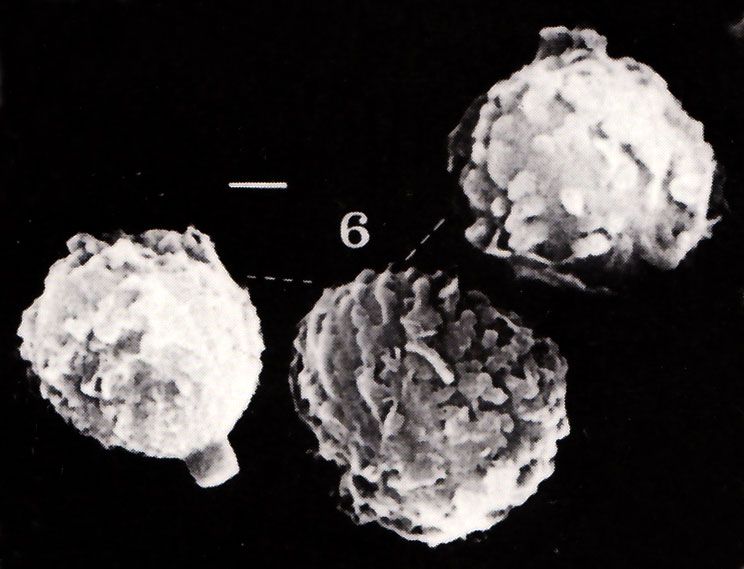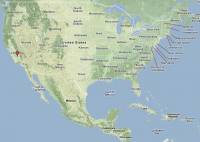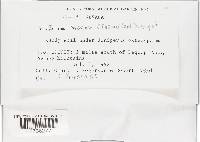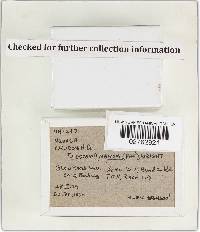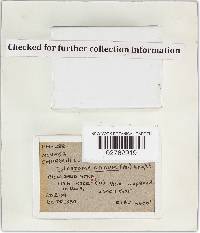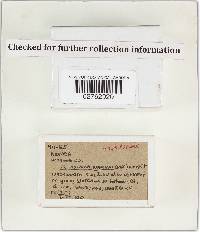
|
|
|
|
Family: Agaricaceae
|
Wright J.E. 1987. Bibliotheca Mycologia 113: 160. Tulostoma nanum (Patouillard)J.E.Wright comb. nov. (Fig. 103; Pls. IV:5; XLII:5) Basionym: T. carneum Pat. var. nanum Pat., Cat. rais. Pl. Cell. Tunisie, p. 69, 189/; Explor. Tunisie Illustr. bot., tab. III, fig. 1. Etym.: The name refers to its small size. Spore-sac subglobose, small, up to 8 mm diam. Exoperidium hyphal, with threads intermixed with sand grains. Endoperidium almost white to slightly cinereous, finally smooth. Mouth short tubular, generally projecting about 1 mm over the peridial suface. Socket inconspicuous, appressed to the stem. Gleba ochraceous. Stem up to 30 x 3 mm, concolorous, slightly attenuated towards the base, subrugose to squamous-fibrous, or furfuraceous with a few striatulations in the upper third. Endoperidium composed of hyphae similar to those of capillitium. Spores subglobose to elliptic, slightly asperulate under L.M., some apiculate, some guttulate, 4.3-5.5 µm diam (some spores of the holotype were found of larger size, up to 8 µm diam), averaging 5 µm diam. Under SEM the ornamentation appears formed by short, blunt, wide and flat verrucae, much smaller towards the apiculum, many anastomosed, sparsely distributed. Capillitium hyaline, branched and septate; threads thick-walled with visible lumen, swollen at the colourless or slightly yellowish septa; 2.6-6.7 µm diam. Habitat: sandy soil in arid regions. Distribution: Africa; South America; North America; Europe; Asia Minor: Israel. Holotype: Africa: Tunisia: between Feriana and Sidi-aichi, I.1893, leg. Patouillard (FH! as T. carneum Pat. var. nanum Pat.). Illustrations: Patouillard (op.cit.); Dr54 l964: fig. 16 e-f). |
|
|
|

